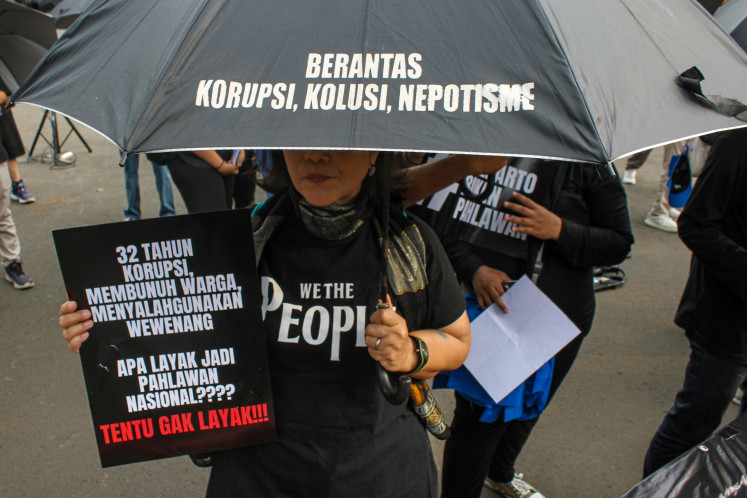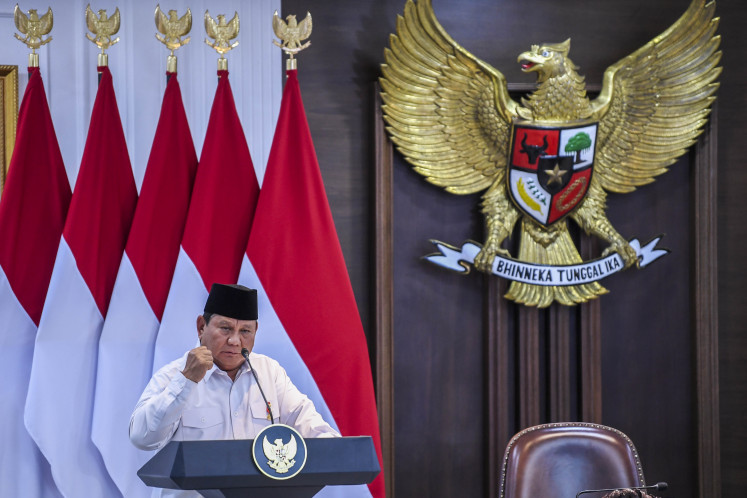Pride, money complicate ban on child jockeys
Muhammad Sabila Putra, 10, made his final ride during a horse race to commemorate the Indonesian Military’s (TNI) anniversary in Bima city, West Nusa Tenggara, on Oct
Change text size
Gift Premium Articles
to Anyone

M
uhammad Sabila Putra, 10, made his final ride during a horse race to commemorate the Indonesian Military’s (TNI) anniversary in Bima city, West Nusa Tenggara, on Oct. 14.
His horse was injured and collapsed, throwing Sabila off. The young jockey hit his head against a rock during the fall; he drew his last breath shortly after he was taken to a hospital.
The Bima public does not see Sabila’s death as a wake-up call to review the involvement of child jockeys in horse racing. But instead, Sabila is seen as a martyr of the century-old culture in the region.
Just nine days after the boy’s death, Bima Deputy Mayor Feri Sofiyan posthumously honored Sabila as “the hero of young jockeys” at a horse racing event at the Sambina Race Track in Bima.
Feri, who also serves as head of the Bima National Sports Council (KONI), praised Sabila for his meritorious contributions in keeping the tradition alive.
“We can’t stop [horse racing] as this is tradition,” Feri said.
However, the West Nusa Tenggara Child Protection Institution (LPA-NTB) has demanded that the practice of using young jockeys in horse races be stopped once and for all.
The institution’s law and advocacy coordinator, Joko Jumadi, raised the organization’s concerns that more children would lose their lives in horse racing. They have appealed to the Indonesian Child Protection Commission (KPAI) to make this issue a priority.
“This is an activity that puts children in danger,” Joko said.
An LPA-NTB investigation found that monetary gain is the main factor that encourages families in Bima to enter their children in horse racing.
Horse owners usually recruit child jockeys, aged 6 to 12, to be contract-based or freelance riders.
A contract jockey can receive around Rp 5 million (US$357.72) for competing throughout a championship, while a freelance jockey receives a fee of between Rp 100,000 and Rp 300,000 per ride.
“According to our survey, young jockeys usually retire at 12 and become horse keepers. When they have children, they will train them to become young jockeys, too, because they can earn a lot of money from that,” Joko said.
Bima cultural observer Alan Malingi said that the horse riding tradition in Bima started in 1925 when the Bima Sultanate celebrated the birthday of Dutch Queen Wilhelmina. At that time, the jockeys were adults.
The tradition was halted in 1942 when Japan occupied the archipelago and was revived in 1945 following Indonesia’s independence.
“Between 1960 and 1970, the horse racing tradition began featuring child jockeys,” he said.
If the government or regional administration decided to keep allowing child jockeys, Alan suggested that they at least limit the number of horses a child jockey can ride in a day.
During the fatal race that killed Sabila, there were 30 jockeys taking turns riding 700 horses. That means a jockey rode more than 20 horses.
“Young jockeys only wear regular helmets, without footwear and other safety gear. This should be put into consideration,” he said.
Bima, located on Sumbawa Island, has a strong horse culture. For the Mbojo Tribe that dominates the demography of Bima society, owning a good horse is a significant source of pride for men.
Alan noted that adjusting the horse culture in Bima would bring the tradition acceptance from the wider public.
“If people insist on featuring young jockeys, which is not in line with the standards of equestrian sports, Sumbawa and Bima will never be a part of professional equestrian competitions; it will only last as a mere tradition,” he said.









